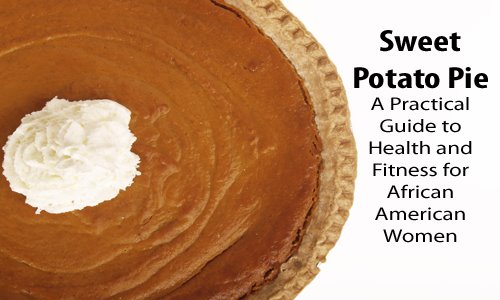
About Ayurveda
Ayurveda means “the science of life” and is a natural healing system that has its roots in India. As one of the whole medical systems, Aruyveda has gained popularity in the United States due to Dr. Deepak Chopra, an Indian-born doctor who uses a combination of Aruyveda and conventional medicine to treat his patients in the US.
Ayurveda is a holistic approach to medicine that seeks to integrate the mind, body and spirit to achieve overall health. Keeping the body in balance is believed to lead to overall health and contentment. One of the main principles of Ayurveda is the belief that to keep the body free of illness and disease, it must be regularly cleansed. Ayureda modalities include the following:
1. Herbs and food
2. Massage
3. Meditation
4. Yoga
Used separately or in combination, these therapies seek to restore balance to the body. Ayurveda also treats specific health problems, whether they are physical or mental in nature.
History
Ayurveda has evolved over thousands of years in India. It is based primarily on ideas from Hinduism but also shares its origin from ancient Persian beliefs regarding health and healing.
The first texts of Ayurveda were penned some 2000 years ago on palm leaves. These texts, the Caraka Samhita and the Sustruta Samhita, covered topics such as the following:
• Pathology
• Diagnosis
• Treatment
• Lifestyle
• Advice for practitioners, including medical ethics
• Philosophy
Ayurveda is still the main medical system used in India today. Western medicine is prevalent there as well, but Ayurveda remains the main medical treatment used by India’s rural population who make up 70% of the country.
Basic Tenets of Ayurveda
Ayurveda’s belief about health revolves around the idea of the three Doshas: Vata doha, Pitta dosha and Aapha dosha.
About the Doshas
• Each dosha is made up of the combination of space, air, fire, water, and earth.
• Each dosha has its weaknesses and strengths and can be put out of balance for any reason.
• Each person is a combination of the three doshas and has his or her own dominant dosha. One’s dosha is constantly being reformed due to lifestyle and diet.
• Each dosha represents a certain body type, personality, and has its own risks of various illnesses.
• Imbalances in a dosha can occur because of stress, lack of exercise, unhealthy diet, and other lifestyle choices and bodily processes.
The Vata dosha is considered the combination between space and air. Vata dosha is the most powerful of the doshas. It controls the heart, breathing, the mind, and cell division. Staying up too late, eating before your previous meal is digested, or eating dried fruit can upset Vata. People whose main dosha is vata are thought to be susceptible to mental, skin, and neurological diseases
The Pitta dosha is represented by fire and water. Pitta is said to control the digestive system and hormones. When Pita is out of balance people may experience negative emotions and digestive problems. People whose primary dosha is pitta may have higher risk of arthritis and heart disease.
The Kapha dosha combines water and earth. Kapha controls growth, helps with immunity, and keeps up one’s strength. Kapha is put out of balance by eating when one is full, eating too many sweets, and eating and drinking foods with too much salt. A person whose primary dosha is kapha is believed to be susceptible to stomach ulcers, diabetes, gallbladder problems, and respiratory illnesses.
Treatment
The ayurvedic practitioner will develop a plan for the patient to follow that will work to get his doshas back in synch. Ayuverdic treatments take a comprehensive approach. They involve family and friends to help the person with their treatment plan and may require substantial changes in lifestyle, diet, and exercise regimes.
An Ayurvedic treatment will consist of four parts:
1. Eliminate impurities. The process of eliminating impurities is called panchakarma which focuses on cleansing of the digestive tract. The cleansing of the digestive system is usually accomplished with fasting, enemas, or special diets. To eliminate worms or other disease causing agents, practitioners might prescribe nasal sprays or inhalers filled with medicated oils.
2. Reduce symptoms. This is where the practitioner may suggest significant lifestyle changes. A patient may be asked to perform yoga exercises, meditation, and stretching. Various foods and herbs may be prescribed, and they may be mixed with small doses of metals believed to protect the patient from harm.
3. Reduce stress. Increase harmony and contentment in the patient’s life with the use of yoga, meditation, and other therapies.
4. Help rid the patient of psychological and physical problems. Massage or vital points therapy may be used to reduce pain and improve circulation. Ayurveda teaches that there are 107 vital points on the body that can be manipulated to bring about better physical and mental health.
Risks
The biggest risk with Ayurvedic procedures is toxicity. Some of the herbs and medicines used have been shown to have potentially dangerous levels of lead, arsenic, and other harmful metals. In 2004 the Centers for Disease Control received reports of 12 cases where people had lead poisoning because of an Ayurvedic treatment.
There haven’t been many clinical trials of Ayurvedic practices and those that have taken place have been small and had problems with research and design that made it difficult to rely on the results generated for any definitive answers on the efficacy of Ayurvedic treatment.
Ultimately the best way to avoid complications is to seek out a fully trained and licensed Ayurveda practitioner. While there are schools opening in the U.S., the best Ayurveda schools are located in India, so it would best to find a practitioner who has studied overseas as they would have the most rigorous training. Also, don’t rely on a Ayurvedic practitioner for your diagnosis. Use your primary healthcare provider for an initial diagnosis and seek out an ayurvedic practitioner to treat your illness in conjunction with your primary physician.
Related Posts
Introduction to Complementary and ALternative Medicine (CAM)


















